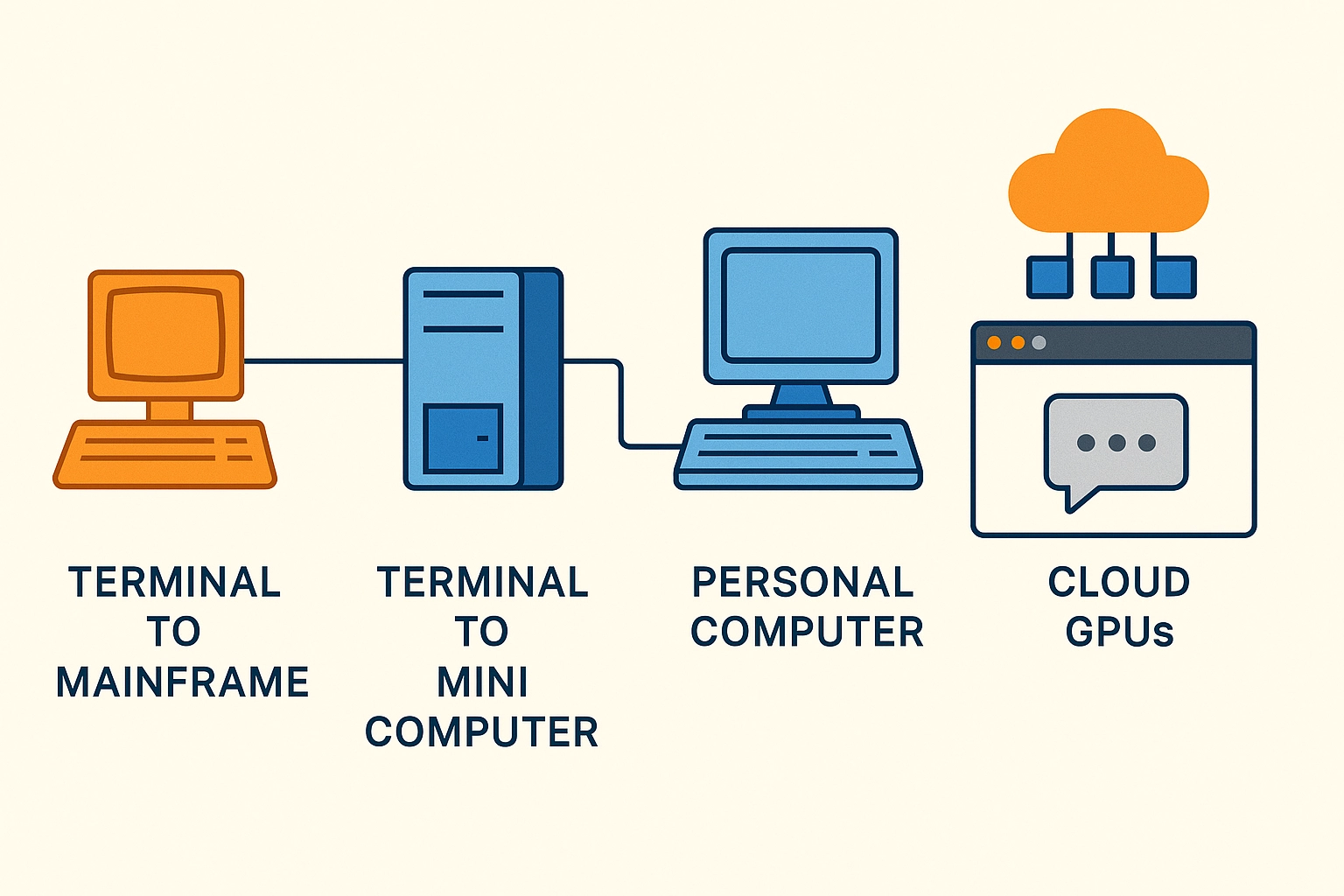Computing architecture has always evolved in cycles moving from centralised to distributed and sometimes swinging right back to centralisation, albeit with new paradigms. The journey from terminals hooked to mainframes to today’s cloud powered AI assistants shows just how much our computing interfaces and philosophies have changed over time.
1. Terminal to Mainframe: Centralised Beginnings
In the early days of computing, users interacted with powerful mainframes through simple, “dumb” terminals. These terminals had no processing power of their own they were merely input/output devices sending commands to a central computer. This model emphasised centralisation: one powerful machine did all the computation, while users relied on it entirely.
This setup was efficient for its time, especially when computing resources were scarce and expensive. The mainframe era established the principles of multi-user systems and batch processing.
2. Mini Computers: Shrinking the Centre
As technology advanced, mini computers emerged, smaller, more affordable systems that could serve departments or smaller organizations. While still centralised, mini computers distributed computation across more locations, making computing more accessible. They reduced reliance on the monolithic mainframes and introduced early hints of decentralisation.
Terminals were still the primary interface, but the main compute power had become more geographically distributed.
3. Personal Computers: The Great Decentralisation
The personal computer (PC) revolution in the 1980s and 1990s brought a massive shift. Now, individuals could own and operate fully capable computing machines. PCs came with their own CPUs, memory, and storage, and didn’t need to be connected to a central machine to function.
This marked the height of decentralisation: computing became personal, flexible, and independent. Users had full control over software and hardware. Operating systems like Windows and macOS made powerful interfaces mainstream.
4. GUIs and the Era of Local Power
With graphical user interfaces (GUIs), personal computers became more user-friendly and powerful. Multimedia, productivity software, and games flourished. The web brought another wave of decentralised creativity; anyone could host content, build applications, and run their own infrastructure.
At this point, the model was clear: computing power lived locally, and servers mainly delivered content or synchronized data.
5. Cloud and AI: A Return to Terminal Thinking?
The rise of cloud computing began a gradual shift back toward centralisation. Today many apps run primarily on cloud infrastructure, with clients (browsers or mobile apps) acting as frontends to cloud services.
AI has amplified this trend. Large language models and generative AI systems are too resource-intensive to run locally on most devices. Instead, we interact with these systems via cloud-hosted APIs. It’s similar to the terminal-to-mainframe setup except this time, the “mainframe” is a distributed GPU cluster, and the “terminal” is your web browser, chat window, or CLI.
With tools like ChatGPT, Copilot, and even local terminal AI agents, we’re entering an era where the most advanced computations are once again centralised and users send “commands” for interpretation and execution remotely.
6. Full Circle with Upgrades
This return to terminal style interaction isn’t regression; it’s evolution. We’ve circled back to centralisation, but with vastly more powerful infrastructure, broader access, and a richer understanding of human computer interaction.
We’re witnessing the fusion of old architecture with modern capabilities: cloud scale resources, AI powered inference, and universal interfaces that bridge devices, platforms, and users.
Final thoughts
From blinking cursors on monochrome screens to chatting with cloud-based AI on a smartphone, computing has always been about balance between centralisation and autonomy, simplicity and power. And now, with AI, we’re rewriting the rules once again.
